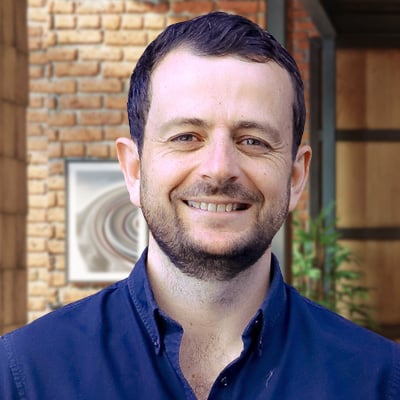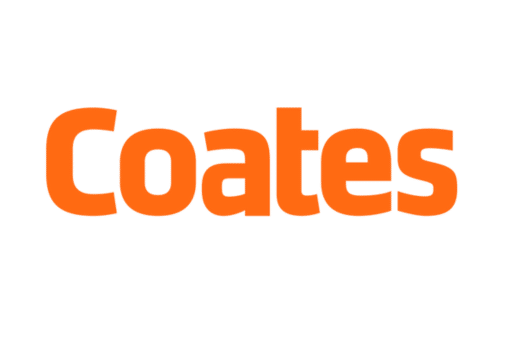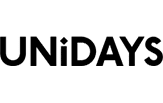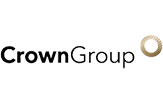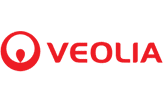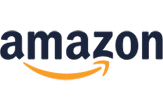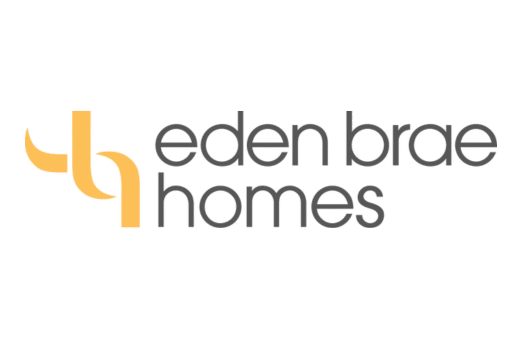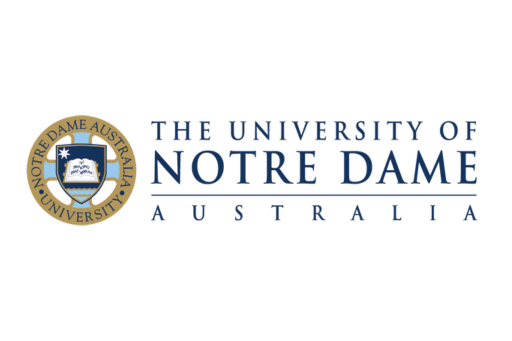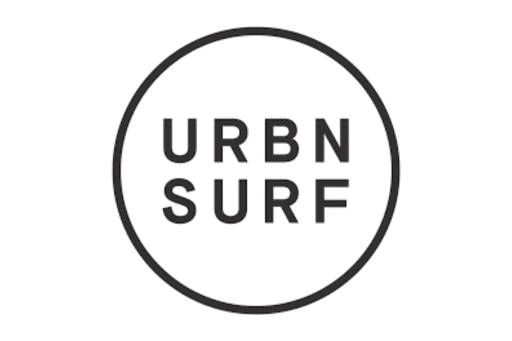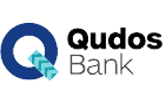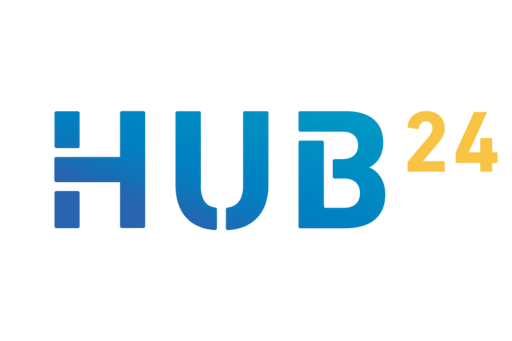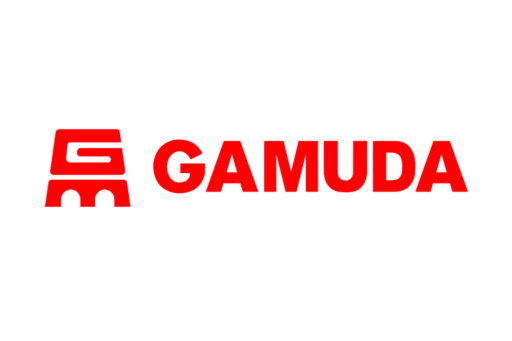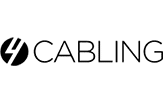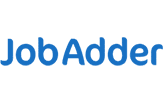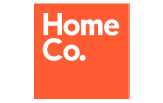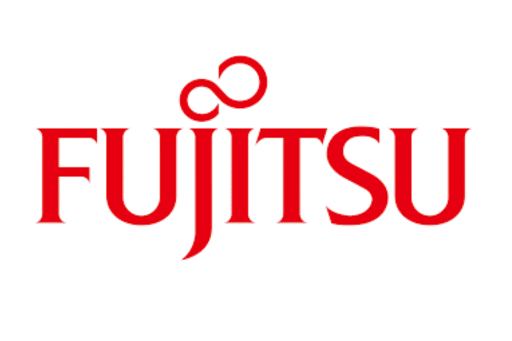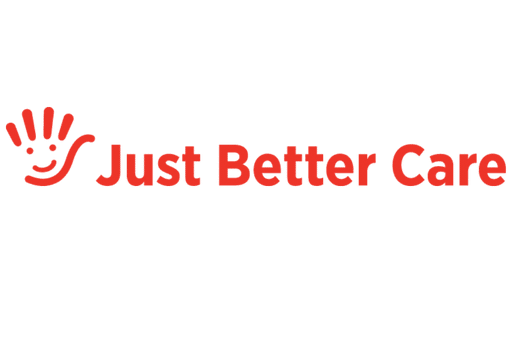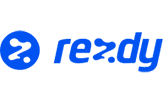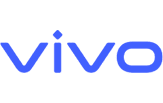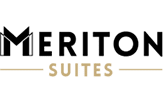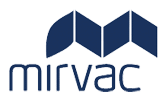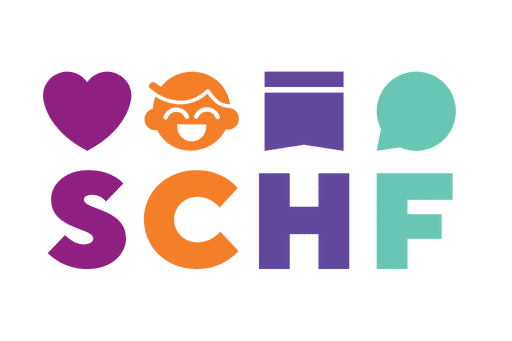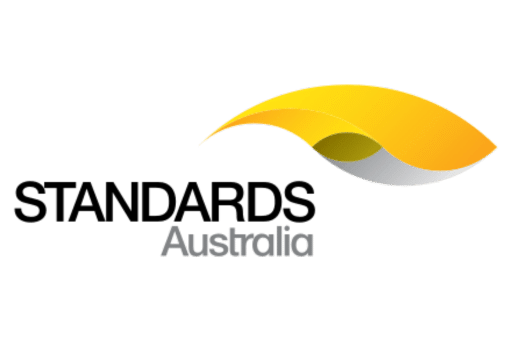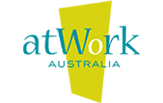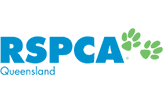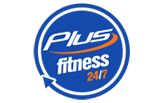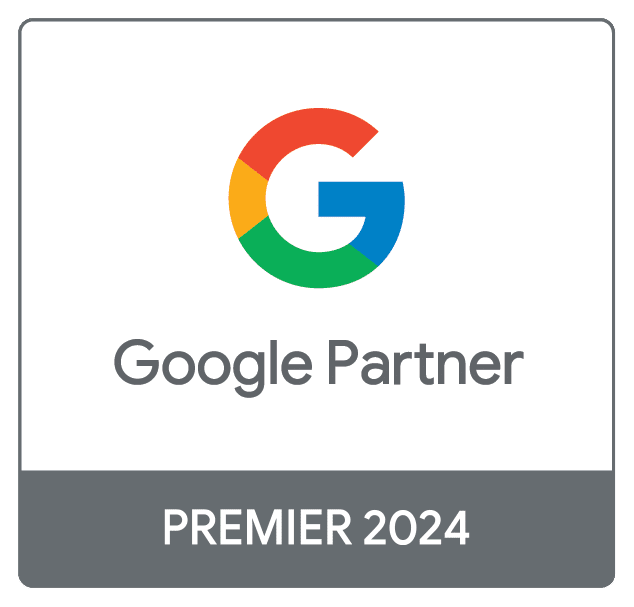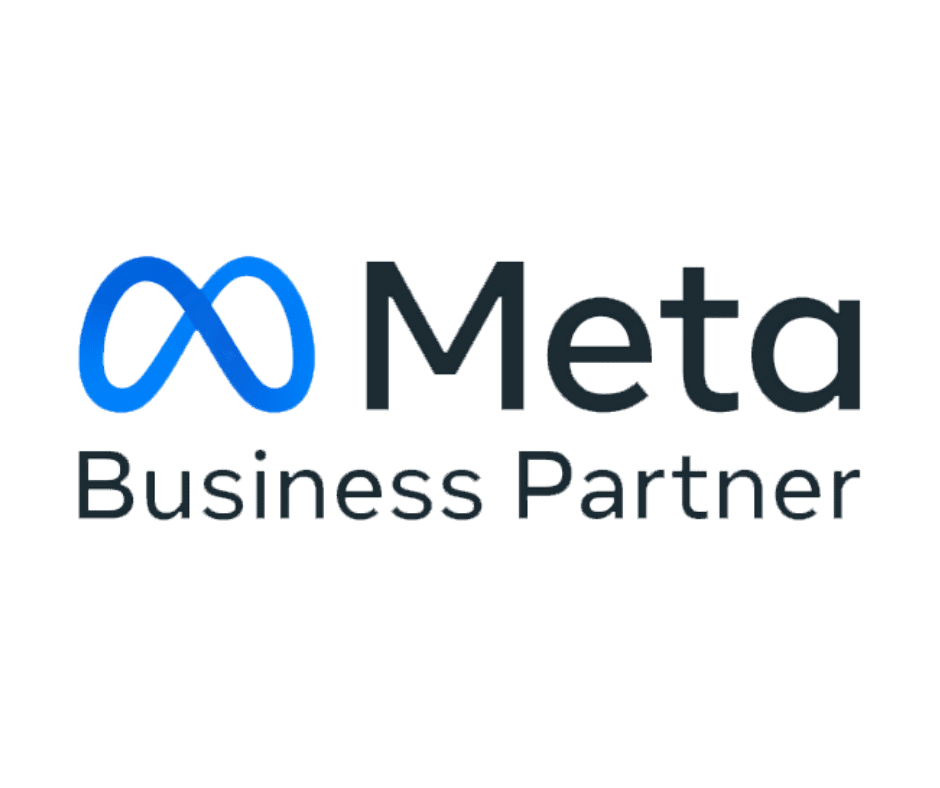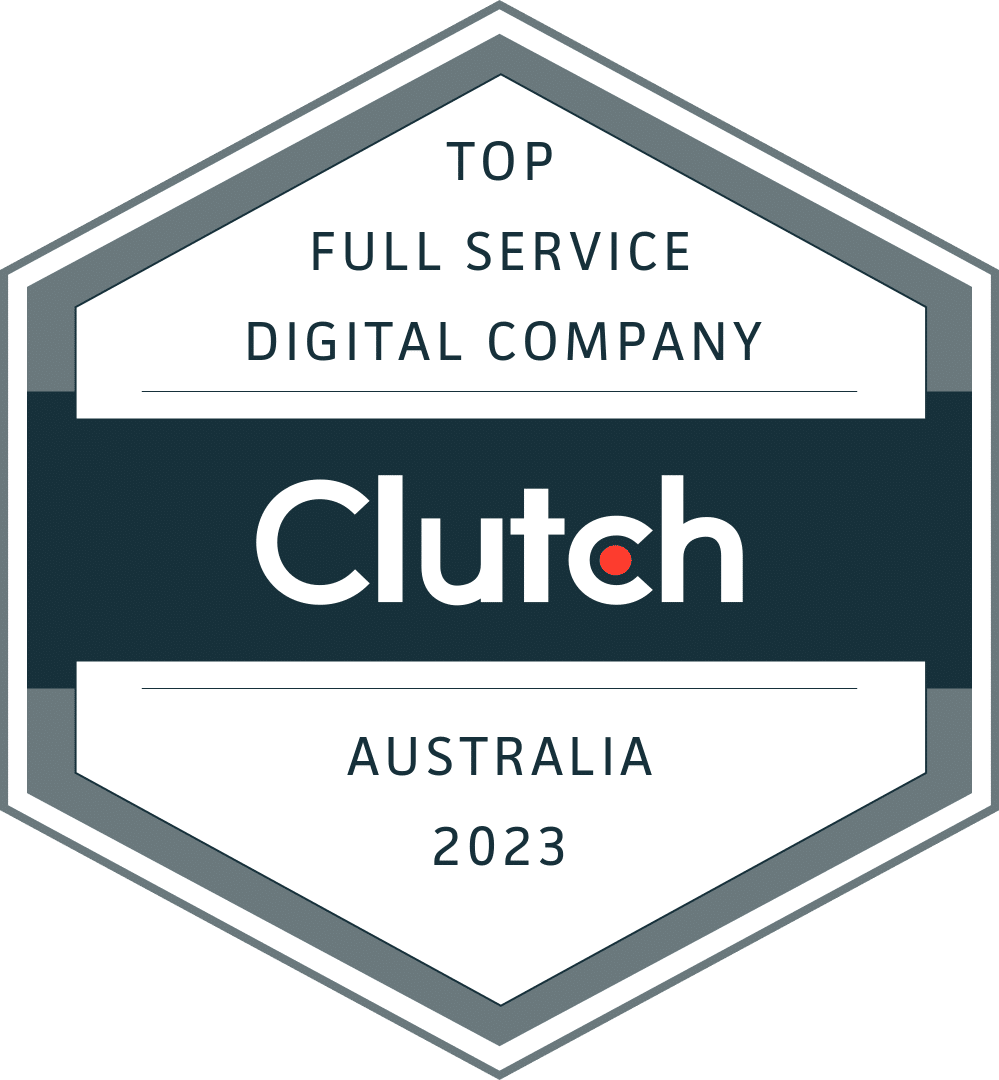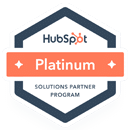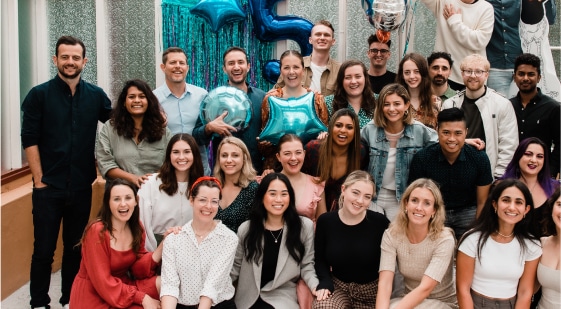How to Master Copywriting with Kate Toon
Episode Description:
What type of content do you write about? How often do you publish blogs? Do you have a consistent tone of voice? Copywriting legend Kate Toon reveals her do's and don't's when planning and writing successful copy for your business.
Key Takeaways:
- What makes great copy?
- How do you consistently write good copy?
- How to develop and write with a clear tone of voice.
- Should writing copy be an internal or an external process?
- The intersection of SEO and Content Marketing.
- How do you know if your copy is performing?
Featuring:

Kate Toon
About the Guest:
Kate Toon is an award-winning entrepreneur, digital educator, SEO and copywriting consultant, coach, speaker, author and podcaster, with more than two decades of experience in all things advertising, content and digital. She is the founder of CopyCon, Australia’s first dedicated Copywriting Conference, and is the author of ‘Confessions of a Misfit Entrepreneur’.
You can follow her on Instagram [@katetoon], LinkedIn, or find out more on her website.
We wrote the best-selling marketing book, Smarter Marketer
Written by Rocket’s co-founders, David Lawrence and James Lawrence, Smarter Marketer claimed #1 Amazon best-seller status within 3 hours of launch!
Transcript
James Lawrence: Welcome back to the Smarter Marketer Podcast. I'm here today with Kate Toon. Kate, welcome to the pod.
Kate Toon: Hello. It's lovely to be here.
James Lawrence: When we think of copywriting in Australia, we think of Kate Toon. Kate cut her teeth in the UK and Australia. Amongst others, she worked for Ogilvy, where she worked on big brands like American Express, OzPost, Hyundai, IBM, Qantas, and Telstra. Since 2004, she has operated her own business. And I like this. I like this a lot. Where her Twitter bio reads Sydney's favorite copywriter. Working with small businesses and big fat corporates to provide SEO copywriting that's affordable, reliable, and wonderful. In 2014, she founded the Clever Copywriting School, where she still acts as copywriting trainer and mentor.
James Lawrence: She's the founder of CopyCon Conference. In 2015, she launched the Hot Copy Podcast, where she's been co host for the past seven years. She's also the host of the Recipe for SEO Success Podcast, which frustratingly outranks the Smarter Marketer Podcast every month. Kate has won or been a finalist for basically every award there is in the industry. The SEMrush Personality of the year. Ahref's. Best SEO pod. B&T. Best of the best B&T women in media and a bunch more. Kate, welcome to the pod.
Kate Toon: My goodness. I sound like an ass.
James Lawrence: That's not true. That's all the research I've done for the Pod, so we can finish it here. Okay.
Kate Toon: I'm really an enigma, so we'll get into the dark side of me in this podcast.
James Lawrence: Well, I think I kind of thought it'd be nice to just start where you're up to, like, obviously big career, lots of different things. The copywriting business, the podcast, the media stuff, the CopyCon. What's taking up most of your time these days?
Kate Toon: I mean, really, these days, it's a lot of keeping on, keeping on. I've been in that kind of empire building. I'm in my empire building zone for the last eight years-ish and more recently, I'm just trying to maintain what I've got. So I've got three lines of business, the SEO side of it, the copy side of it, and then my own digital marketing mentorship. I've got three podcasts, so I've just launched a new one called Copy Chats. Nice to replace hot copy. The conference is a big deal. It's a lot of work doing events, and then just literally the day to day of having memberships is the Attrition, and they're getting new people in and, you know, finding time to dance on reels because we have to do that for at least half an hour a day these days.
Kate Toon: So there's nothing necessarily new. It's trying to find newness in existing products and then also fill the gaps. Like maybe your funnel isn't perfect, maybe you could do the better email here. So just improvement and maintenance. It sounds very dull, doesn't it? But that's where I’m at.
James Lawrence: Many hats. Are you still doing copy for clients?
Kate Toon: I do every couple years take on a couple of clients. Not really for financial reasons, but more to keep my hand in. Because if I'm sitting here trying to mentor people on how to have great client relationships and where to use your colon, I kind of need to know how to do that myself.
James Lawrence: I think that's good. Stay sharp. In terms of the conference, who attends a target market when's it happening?
Kate Toon: Well, look, I'd like more people to attend it. At the moment it's majority freelance copywriters, so people who are writing copy as their own business. But we are growing the audience of in house copywriters, in house marketers, agency copywriters, and also related industries like web developers, graphic designers who have to work with copywriters and don't really understand what they do. It's a great networking opportunity, but the presentations are broad enough that they can appeal to solo people and people who are working in a larger organisation.
James Lawrence: Nice. Very good initiative. This might be a really easy question to answer or a really difficult one. What makes great copy?
Kate Toon: It is so subjective, it's funny. I think we could look at it from an analytical editorial point of view and go, well, that full stop is in the perfect position and that is the absolute best adjectival modifier. But really I think it's copy that gives us the feels. Copy that hits us in the gut or the heart and makes us laugh or cry or feel uncomfortable. That to me is when copy has actually shifted your perspective. So really copy that's emotional and that's going to be different for different people. But there are some rules and truisms that apply overall. So yeah, I think emotional copy is the best copy.
James Lawrence: Yeah, nice. It's so hard because copy you probably touched, not there. You've got freelancers coming to the conference, you've got in house, you've alluded to a touching graphic design and web dev and that's only in a digital context. What's the process for an organisation to consistently generate great copy? And I think on the Pod we're going to have people listening that are part of big machines, lots of staff, layers of bureau bureaucracy and legal and whatever else. And then we're going to have organisations where they're smaller, nimble, can move things around faster. But from your observation, how do businesses get great copy happening?
Kate Toon: I think it starts going back to the roots of your brand, your brand values. I mean, I'm sure you've talked about this to death on the podcast, but really deciding what you stand for as a business and more importantly, what you won't stand for. So really coming up with those values, but going beyond the obvious ones, like, we want to be knowledgeable and professional, everyone wants to be those whatever. So trying to go a bit deeper and then really thinking about your brand personality on top of that. Because values are one things, they're what we believe, but how we express ourselves, it can't be the voice of the CFO or the CEO or the receptionist or whoever's writing the copy today. It needs to be consistent and it needs to move beyond the boring.
Kate Toon: There needs to be a bit of edginess in there. People often when they do these customer avatars, it's all like, oh, this is Clive, he's 47, he drives a Volvo and he lives in Mossman. It's like, well, that tells us nothing about Clive. What is Clive waking up at 03:00 a.m. in the morning and thinking about? What are his worries? What are his fears? What is his deepest desires? That kind of customer avatar really helps. But you need that avatar of yourself, of your brand. It's easy for me and you, because we are our brand. But as a company, like, who would play your company in a movie? Is it Tina Fey or is it, I don't know, Melinda McCarthy, who's playing you in a movie? And those kind of metaphors really help other people get it. And then I think after that, that all needs to be written into some kind of bible, some kind of document that isn't put up on a dusty shelf that is consistently referred to. So every month or something, you sit down, you look at all your marketing materials and go, did we hit the mark? Does this piece of this random tweet that Bob wrote, does it actually match our brand values? If not, we don't want Bob sending you more tweets.
Kate Toon: So keeping it as a living, breathing document and having someone in the business who owns that and who, to a degree, polices that, because I think you and me, we see this all the time because we're marketers. But often you'll see brands that are hideous on Facebook. Their website is dusty and dry, but they've hired a really cool, social media person who's tweeting the most hilarious tweets and they're brilliant, but they're completely disconnected. So it's that disconnect that I think, erodes great copy.
James Lawrence: It's good I love it. Practically speaking, what is that document called? Is it a style guide?
Kate Toon: Tone of voice? And often it's funny as a copywriter and I'm sure that the listeners will have it. When you arrive in a big corporation, they've got a brand guideline, they'll tell you exactly how many pixels you need to have around the logo and what RMG reference the text needs to be. But there is nothing about copy, there is no plain English guidelines, not even like a lexicon of words that the brand uses and won't use. First thing I always do with every client is say we're not allowed to use passionate or innovative.
Kate Toon: We're not allowed to use those words. And I also ban exclamation marks because I think they make you sound like an excited teen and a full stop is much more emphatic. But that needs to be written down somewhere because otherwise Bob's using exclamation marks, Sue's using full stops and some other random person's using semicolons and no one knows what to do with the semicolon, let's be honest. I think it starts with that tone of voice guideline that has as much priority as the design guideline. Why do we care so much about how our logo is represented, but not worry about our tone of voice? It's crazy.
James Lawrence: Love it. Okay, so we need a style guide to kind of manage the visual. We need a tone of voice document, which is our personality, incorporating our values, who we are, who we're not, words we use, words we don't, etc, and then having someone in the organisation responsible for keeping it up to date and policing content against it.
Kate Toon: And they're not hard to produce. I've actually got a template in my copy shop for a tone of voice guideline, which takes you through all of it, asks you the question, helps you define your USP, your unique selling proposition, and then you fill that with samples. So if you do a really killer email or some great micro copy or even your packaging copy, some packaging copy these days is amazing. You pop that into a Google Drive folder so people can go and look at examples of your own brand voice to get an idea when they start writing. Because copywriters will change. People move from business to business. Marketing managers change. But you want the brand voice to stay the same.
James Lawrence: It's great. And I think, like anything, having something well conceived is better than having something perfect, right?
Kate Toon: Yeah. Just get it going. It's going to change because you're not going to get it right fiirst time. Whenever I get a new client, obviously, because they've seen my site and my style is quite conversational, they're like, we want copy. Like your copy. We want to be really out there and really funny and really weird. And then I send them the copy and they're like, not that. That’s weird. What have you done? And also, you're going to put some words out there and they're going to fail. You're not going to hit the mark or you're going to say, make a joke or try and be playful. And it's going to go sour, because that happens, right? We're in a cancel culture, so it has to evolve and it has to be checked back on. And your business evolves. I think the way that businesses represent themselves today after two years of COVID after Black Lives Matter, after #metoo, very different to where we were two years ago, you simply would not talk in the same way that you talked two years ago today. It wouldn't work. So it has to evolve, and you have to just keep trying.
James Lawrence: Let's go on that, because I did have a question, which I was intending on asking later around. Just how has good digital copy changed over the years? And maybe, maybe whether it's digital or not. I think that's an interesting observation you've made there, just about how the climate we've been in in the past two years, even seeing the way, I guess, that organisations in America have responded to the Supreme Court ruling on Roe versus Wade, maybe just talk about your observations there. How has copy changed, maybe even pre-COVID, like, over the last 20 years?
Kate Toon: I think we've moved away from professionalism, to be honest. I think we've moved away from corporate shiny brochures that talk in almost a kind of detached third person way. People want to connect with other people. People want to work with businesses whose values are aligned with their own. You don't want to start buying from a brand and suddenly find that they're giving money to the Klu Klux Klan. I mean, that's an extreme example, but I think obviously inclusivity has become a real thing. We want to make everybody feel heard and listened to, and it's beyond the awful stockshots of a multiracial family running down the beach for an insurance ad. It's how we use pronouns, it's how we use adjectives. And a lot of idioms are no longer appropriate. You wouldn't talk about Chinese whispers.
Kate Toon: You have to really look at the cultural references that you're making. And I think that terrifies a lot of businesses because it feels like these days you're damned if you do and you're damned if you don't. I saw yesterday that Canva had announced that they're going to support people who were affected by the repeal of that law. And 99% of the comments were amazing. They wrote a really great post, but of course the 1% were like ahh and I think this is the problem. We can't hide anymore, either as business owners or brands. We can't go, oh, that's a political issue. I'm not going to express my opinion on that. Or, that's a human rights issue. We are just business. We're just talking about business. People don't want that anymore. They want to know what you stand for. They want to know where you are on issues. And that may mean you lose some customers, but it will mean that the customers that like you, like you ten times more because they respect you and trust you as well as like you. And respect and trust is what makes people buy.
James Lawrence: Yeah, I guess if you stand for nothing, then you kind of get nothing. You'll fall for anything, as they say. It definitely feels, doesn't it, in terms? The tectonic plates, looking at, I guess, the power that your kind of Facebook's and your Googles and Apples now have at a bigger level, corporations playing a role that is probably different to the one that it was 35 years ago. Right?
Kate Toon: Yeah, exactly. And they have a role to play. The fact that a big organisation I've used for canva, again, can come in and pretty much challenge the status quo by saying, yeah, you've just passed the law and we're going to help people circumvent that law and there's nothing that can be done about that. I think with big brands comes big responsibilities these days and you can't just shy away from those. And a lot of that is about how you express that in your copy. Every tweet is analysed, every email that you send. Someone is screen grabbing those internal comms that you wrote that you didn't really hope would go out of the business. Someone screen grabbed them and shared them somewhere. So you need to be cautious. And I think that a lot of businesses are scared of saying anything in case they say the wrong thing.
James Lawrence: And it is a minefield. Right. It is totally different. It's a very different dynamic to the one that we've had historically. Right?
Kate Toon: Yeah. But I think the thing is, as long as you take responsibility, as long as you try, most people will appreciate the effort and as long as you if you make a mistake, you own it and apologise and say, we'll try and do better. Educate us. You know, like if you make a faux pas with a, you know, a gender pronoun or something and you get it wrong and you make a mistake and you say, hey, hands up, we've learning. Thank you. Thank you for telling us. We'll do better. That's all you can do in this modern world. So better to try than do nothing at all.
James Lawrence: It feels that authenticity wins out. Right. And probably we're going broader than copy at the moment, but I think authenticity from a brand. People can smell a fraud, generally. And we live in an age where we're making decisions around brands and whether we want to engage or not way before we actually speak to a representative. Absolutely. Whether it's reviews sites or Google reviews
Kate Toon: We're doing our research. But I think it is copy because you would say one of our brand values is we want to be authentic. But how does that translate into copy? Because everyone wants to be authentic. What does that mean? Well, it means in copy that you talk like a human, that you talk to individuals who don't talk about our customers. You talk to the one person who's reading this copy right now. You use short sentences. You use plain English so that anybody, even who doesn't have English as a first language, can understand your copy.
Maybe you're a bit playful, maybe you're not overly didactic and salesy, maybe you're not condescending. That's authentic. But it's also owning your flaw, sharing your bad stories and your good stories. So when you develop these tone of voice guidelines, you can't just put we're authentic. You need to go, well, what does that mean when I write a tweet? What does that mean when I put a post on LinkedIn? How do I be authentic on LinkedIn when so much there's so much faux authenticity on LinkedIn? How do I do it in a way that doesn't seem fake? When I'm trying to be authentic is a copy challenge?
James Lawrence: And how do we do it? So we tone a voice. That's our Bible reference point. I kind of get it right. How do I get great copy in an organisation? Does it have to be in house? Am I using freelancers? Am I using a panel of people? I would imagine that your experience is similar to mine, where we go into a business and lots of copy is being written by people that aren't trained copywriters, right? So how practically, what are some tips, tricks, observations on what works and what doesn't?
Kate Toon: I mean, I think there needs to be an owner of the copy in the business that's consistently there. But it takes a village to write good copy. And if you work with an agency, you pay that premium because you're getting a creative director. You're usually getting a designer and copywriter who are working together. Or you're getting an account manager, a producer. So you've got like five or six minds looking at the creative before you see it and coming from different perspectives.
Kate Toon: With different life experiences, different brand experiences, and sometimes that creative might be moved to a different creative team, so then you get a whole fresh perspective. But a lot of businesses can't afford that level of copywriting service. So you need to try and emulate that as best you can. And it's about getting opinions, but the opinions that are valuable. So I have been an in house copywriter. And often you're just on your own and there's no one to talk to, there's no one to bounce your copy off, there's no one to proofread it. And that doesn't create great copy, that creates very stagnant copy. So I think if I was working now and I was in charge of the copy, I would have a little corral of freelancers that I could call upon as and when I needed them. I would create maybe little brainstorm sessions, as I said, monthly sessions to review copy that's written and talk about what you like and what you don't like. But there needs to be an owner, someone driving it. And the thing, unfortunately, I'm sure you've found it as well, James, is that copy is often the last thing that people think of because everybody thinks they can write, just like everyone thinks they've got good dress sense and a great sense of humor. Everyone thinks they can write, but it's a skill, it's a craft. And often it's about knowing what to leave out, not what to include. It. There's obviously an art to it, otherwise I wouldn't have a job.
James Lawrence: But I think it was like because back in the day, we do a lot of web work and it was like the whole three month process, right, to build a website and literally the copy would come two weeks later. And it's like, we now need to populate these. And I think my perspective like the space we're in now, Google, Facebook automation, AI, machine learning, it feels like ideas and storytelling. And copy is the thing that will remain in 15 years time.
Kate Toon: I believe that copy informs design and copy informs information architecture and Copy informs UX. So for me, it's first. And I've been in your situation where literally you might, oh, just keep the Lorem ipsum. I can't be bothered. Really got a day, let's just get it live.
James Lawrence: Or the site goes live with Lorem ipsum all through terms and conditions…
Kate Toon: Let's be honest, sometimes some of the Lorem ipsum is better than the copy. But I think talking about Google, I'm sure you're going to cover this. Google over the last two years has released multiple algorithms focused on language. So we had Google hummingbird several years ago that looked at why we're searching rather than just what we're searching. It looked at intent. Is this conversion intent? Is this information intent? Then more recently, we've had Google Bert. And Google Bert is natural language processing.
Kate Toon: So it actually breaks down the construct of your sentences into modifiers and prepositions and understands that adding a preposition like ‘or’ completely transforms the meaning of the search query. Right. And then we've just had Google mum, which now can translate over 75 languages at their core level. So we've always been focused so much on English, most complex, one of the most complex languages, but we've got to remember that we just take this all for granted. But I think the example I use is in Webster's dictionary, there are 645 definitions of the word run. How is Google meant to know which one you mean? Because it looks at the context, it looks at the words around it, it looks at previous searches.
Kate Toon: But the good news for Copywriters is the last algorithm update, there's a core update just happened in May, actually is kind of not loving the AI content. Yeah, the Javasism, whatever that it looks good on Surface, but Google can recognise it if it's overused and overdone. And at the end of the day, AI is amazing, but I don't know if it's right at the level yet where it can come up with ideas. It can play at emotion and it can drop a few Idioms in, but it's not really good at really getting insight and ideas. I think there's still time for us yet.
James Lawrence: Terrifying if and when it does.
Kate Toon: Yeah, we'll be old by then. It's all over for all of us.
James Lawrence: Yeah. How do you find good Copywriters.
Kate Toon: Oh, I mean, million dollar question isn’t it?
James Lawrence: That's it. Right? Let's let's pretend I'm an in house marketer. I've got four people in my marketing team. I've got a digital person, and I've got an events person and some other people. We all write okay, but we want to have our brand talk incredibly well to our clients. How do we do it? Should a good copywriter be out? Go across all industries, all mediums? Should you be leaning like we'll often have people in quite clients in technical spaces, and they want, well, I need to work with someone who's written in technical SaaS or has worked in the legal services area. Just experience shares there.
Kate Toon: Yeah, I mean, I think for starters, if you have a bunch of people who are writing copy and it's passable and it's okay, what you might actually need is not a copywriter, but a really great editor. So a great editor can cost as much as a copywriter. It's actually harder to edit copy than it is to write it okay. So even I will use an editor now and again to kind of go through my copy, cut it back, and you get different levels of editor. You can get proofreaders and grammar editors, but what you really want is a structural editor that actually looks at the flow of the thought. Do you have a beginning, a middle, and end? Have you actually laid out your arguments in a way that makes sense? That kind of editor could be really helpful?
Kate Toon: But if you do want to find a copywriter, I mean, I do think you have to kiss a few frogs. Just like with anything. Obviously, you want to look on their site, make sure that they have logos and samples and testimonials. They've got some skin in the game. They've been around for a bit. They're not using some dodgy Gmail email address. They've got a reputation to protect. You're not grabbing them off upwork $5 in the Philippines. But then I think, should they be in your niche? It can help. But you know what's also really helpful is someone that knows nothing about your niche, because then they ask all the really stupid questions.
Kate Toon: So I remember I worked with a small business, but I worked with a plumber, and he'd come up with this great drain that was square. We all see them now in the hotel square and oblong drains. Remember, they all used to be circle, which was a nightmare for Tilers. So he'd bought this concept. He bought it to Australia. And I know nothing about plumbing, but I'm a curious person. So as a copywriter, that's a core skill. So I asked so many stupid questions like, well, how long would it take to install the circle one versus the square one? How much money am I going to save? Where does the water go? Doesn't it get stuck? Because it was just stupid, stupid questions. But that meant that when I wrote the copy, I came at it at an angle that most of the customers were going to get. And even people who are slightly educated about the product, they were still getting it in a language that made sense to them. So I think niche can help. But it doesn't always help because I think that naive copywriters or copywriters who are in your space often ask deeper questions and don't make assumptions.
James Lawrence: I guess that echoes what I would say to someone about hiring a marketer. Right? Yeah. Like, don't hire a marketer that's worked in your space. Hire a great marketer. Because a great marketer doesn't assume anything. They're going to go back and look at the market. What are their pain points? How does the product fit it? What do we do? What do we not do? And build a strategy from there. As opposed to someone who's marketed in your space before?
Kate Toon: Yeah. And they can tend to just roll out the same strategy that they rolled out for Bob two months ago. You want for it to feel fresh. But I think a really important thing with a copywriter is the relationship. I always say to my copywriters, they won't remember the copy, but they'll remember how you made them feel. And as we talked about, we were talking about before the show, that podcasting is quite an intimate medium. Copywriting is a super intimate medium. Even if you are working in a big corporation, you're going to be talking to that person day in, day out. They really need to be able to listen to you and then reflect your words back to you in a better way. So they need to be great listeners. You need to have real good banter with them, good conversation. And to be honest, sometimes that overrides some of the other factors. Do you enjoy talking to this person every day? Do they feel open to ideas? Do they take criticism well? All those personality traits that are really as important as the skill traits, I would say,
James Lawrence: Yeah, that's good. Really good. I'd now like to just discuss because it feels from your career, it's copy, copy, copy, and then kind of SEO comes into it, and now they're kind of intertwined. Right. And we've been doing SEO for a long, long time now, and it really was more of a technical pursuit, right. Back in the day. It was very much back in the day. It was white text, white background.
Kate Toon: Oh, yeah, the good old days.
James Lawrence: And Google's kind of for years been saying, just do good marketing, solve people's, write good content, just write good content. And it's kind of true now. Right. So it is this. These two intermeshed disciplines. Yeah, just maybe talk a little bit about your observations there and the intersection of good copy with good SEO.
Kate Toon: Yeah, I mean, obviously I come from a creative background, but I am a geek, so I built all my websites in WordPress. And back then, the platforms weren't as sophisticated. I think the joy that we have these days is the content management systems are solving a lot of the tech issues for us. So we don't have to be worrying too much about schema or amp or whatever, because there's a plugin that will do that for us, pretty much. So, yeah, there is an intersection, but I think it's very important to learn the tech as well. So I teach SEO copywriting. I have a whole course that teaches, but it doesn't just teach the copy or the keywords, because you can't outwrite poor technical SEO, just like you can't out exercise poor nutrition, site speed, crawlability, responsiveness.
Kate Toon: Those are the first things you fix and then you do the copy. And unfortunately, many clients, as I said, copy should come first when it comes to websites. The tech stuff needs to come first. I've had people come on my course who've been blogging for a year, and they have nothing indexed, and it's because they accidentally checked some box or their robots ticks. See, the developer blocks everything and they never unblocked it. So there is a massive intersection. I still think there is a lot of tech stuff that can be done. Most businesses, they're not at the bleeding edge of SEO. See, I use that.
James Lawrence: I'm not allowed to use that word.
Kate Toon: So they're not at the level where they need to do these amazing technical, changing to Google fonts to shave off 1.2 ends of a second. But if you're like working with NAB and they're up against Commonwealth Bank and everyone wants the keyword home loan, you need to be amazing not just at the content, but the backlinks and the tech. So it is an intersection. Content has always been important. And at the end of the day, overly SEO’d white text on the background, shoving keywords everywhere might get Google to your door for a brief while until you get a penalty. But the thing is, the copy and the UX and the design are what people drag people through and can make them convert. So you can rank number one for that keyword because you've done all the tricks.
Kate Toon: But I get to your page and it's crappy and it's no motion and I don't care, and the pictures are awful and I don't want to buy. So after a while, Google is going to see that you're PO going out of that first place ranking for the next result, and you're going to lose your ranking anyway. So, yeah, it is a massive intersection and all I'm thinking of Trivial Pursuit, I'm showing my age. You had all the little pieces of the pie. You can't just do two of the pie pieces. You need all the pieces of the pie.
James Lawrence: Yeah, I think that's good. That kind of definitely echoes what we find, which is, I don't know when it exactly flipped, but it definitely flipped from it's a technical pursuit. Create your 500 to 700 word blog articles with the keyword in it six times, pump it live and do two of them a week. And that's SEO. And I don't know, I kind of feel maybe five years ago everything worked.
Kate Toon: Yeah, it worked really well
James Lawrence: But it's like we said, the world has changed and Google is trying to reflect the world. So what makes the human heart decide to buy from that brand and the other? It's not the percentage of keywords on the page, it's not even how fast the site loads, because sometimes you'll wait if you're really keen. It's a connection. It's a feeling in your belly that you can't quite put your finger on. I often try and sort of say to a client, shut your eyes and think about why you're wearing those jeans, not the other jeans. Why did you choose them? So many factors go into it. You saw one ad on Instagram or your mate wore them, or they remind you of something that happened when you were twelve. That's all emotion, that's not mathematics and that's not tech. So, yeah, it is a flip, but the tech is still important people.
James Lawrence: Yeah, it really is. And I think we do, as digital marketers, it's kind of we've always had this dollar in, dollar out, click through rate, eight conversion rate mentality, and it's. We're kind of moving away from that now, right?
Kate Toon: We’re having to be emotional, james.
James Lawrence: It’s hard. It's not easy to be emotional. I think the next thing I'd like to discuss is how do you know if your copy is performing? Because it is hard, right? Like you've kind of just mentioned, part of it is gut and emotion. And a lot of what we're doing now in digital isn't quantifiable. And I think once we thought we had complete control over that. So the what are the the symptoms that, yeah, okay, our copy is working. We've implemented tone of voice and we've got this person that is holding everyone to account and we feel it's moving in the right direction. But how do we actually judge it?
Kate Toon: Well, I think it's about what your objective is in the first place. So if your objective is to get conversions, well, then it's going to be more revenue, less traffic, more revenue, more whatever. But if your objectives, engagement and relationship building and all that top of funnel stuff, then it might be something like how long people are spending on the page, how many pages are they viewing, how often are they engaging with the content, leaving a comment? If it's brand awareness and authority, then it might be how often is this content shared with other people? How often is it linked to as an authority source? So I think it does depend on the objective upfront and different metrics will apply.
Kate Toon: The metric that least applies often is ranking, because ranking is one of the things that you can least control as you know, because it's impacted by what everyone else is doing. So obviously you want to get number one ranking, or number two, if you can. But really beyond that, you need to be looking at how long did people stay on the page? How many people clicked away immediately? What was their exit point? Did they go through several pages and read multiple content? Did they leave a comment? Did they share it with a mate? Did they sign up to the email list? Those, I think, are the more interesting metrics.
Kate Toon: I still think email marketing is one of the most powerful marketing tools. I love a bit of SEO, but after that, for me, as a personal brand, my list, everything. And what I love is when I send out a piece of pretty much marketing communication and I get a personal response back saying something like, oh my God, this email really made me think this. That to me, is, yes, money will come. But that, to me, when someone reaches out and makes a personal connection with you, I think that's really it. And I think a lot of brands see that as terrifying. They don't want to have a Facebook page because what if people comment? They don't want to send out emails or they send emails out with no reply, because what if people reply if someone replies, that is gold, that is heaven, that is exactly what you want.
James Lawrence: We get my mum replying. No joke, all the time. Yeah. She doesn't realise it's coming from HubSpot.
Kate Toon: My mum is the only person who comments on my reels and stories and she takes everything literally. So if I'm doing something melodramatic, she's like, sending me a message. Katherine? Katherine, are you okay? In a northern English accent. Thanks, mum.
James Lawrence: It's good. And that kind of ties back into, I think, the shifting sands, right, where it used to be brand and then customers and potential clients.
Kate Toon: Yeah, it's like brands were like up on high and we are untouchable and you will buy our products or die. And now the customer really is in the control seat. And they have so many choices that if you want them to like you, you have to work for it. You have to try a little bit harder.
James Lawrence: Because it is probably, I use this analogy way too much. But it is the old if you're selling insurance, you're doing it door to door and you have all the information and you have the control. Or if you're selling a car back in the day, it's a salesman in a dealership with the brochure. And these are the specs and not anymore. It's 900 touch points through Google, which is the Google data on if you're buying a car, you come into the dealership ready to rock and roll and think, it's not just auto and it's not just travel, it's all industries of B2B. It's B2C cross the board, right?
Kate Toon: It is. And you don't really know. I'm doing some Facebook ads at the moment and my Facebook ads person is delighted because she's getting great conversions. But the truth is that some of these people have been on my list for years. They've listened to the podcast, they've done this. Maybe the ad was the final point they clicked. But it is quite hard as marketers because we want to track everything and sometimes it is quite hard to track through analytics where they were before. And I find one of the most useful things is the anecdotal. So when anyone joins my thing, I'll say, how did you find me? And I often get this kind of monologue.
Kate Toon: I remember I mentioned someone, mentioned you, my cousin Bob. And then I went here and I did X. Or someone will say, I don't know, I'd never heard of you. And then all of a sudden you were everywhere, like the whole yellow car idea. And that is hard for us marketers, because then how do you move the needle? Okay, well, we need more yellow cars, we need Bob to mention us to more people. It's harder. And so therefore people don't like that and so they go back to ads and the immeasurable stuff, whereas sometimes the immeasurable stuff is more powerful.
James Lawrence: And that's like with a Rocket, right? We very rarely would land a client that clicked on a Google ad and had never heard it's. And same as us talking before the pod. We feel like we've known each other for years.
Kate Toon: Loitered. It's the lurking factor, isn't it? And then you actually get to meet and awkwardly launch into a conversation, as we did, as if we just talked last week. We've never met, but once I've listened to your podcast, wandering around the garden, picking up dog poo, then I feel connected.
James Lawrence: Just how I hope everyone listens to the podcast.
Kate Toon: If you're not doing that now, please go. But it's an intimate thing and I'm just not sure that you can put a metric on that.
James Lawrence: Yeah, I think that's right. You touched on email marketing, maybe just any, because it is obviously a big part of copyright for a lot of organisers. Just tips and tricks, what works, what doesn't, observations there.
Kate Toon: Yeah, I mean, back in the day, I was the email marketing manager for two in the UK and they were doing clever things back then that people are only starting to do now. I mean, I think the sophistication of the tools these days really doesn't there's no excuses for sending bland generic emails. You can tag the absolute crap out of people. You know, everything they've done, what pages they've looked at. And while you don't want to make that clear to the user because that's creepy, you want to tailor your messages as much as you can so that we are getting back to the one to one car salesman. We've gone all those touch points to the point where we are back to one to one. It's just me and my inbox and your email. So that email needs to speak to me. So it's really the data behind the email that is. Does the tricks and then the copy.
Kate Toon: Again, informal conversational, apologetic. If you stuff up, your delivery didn't come. We're sorry, we're having a bit of a crap time at the moment with COVID and whatever not. Your email will be answered in 24 hours by blah, blah, blah. Direct language, active language. I think always I would go with clarity over creativity in a subject line on a mobile device. That subject line is going to be shut down to, like, 13 characters, so be careful where it cuts off. Some embarrassing mistakes there, too. But just warmth. Not ridiculous, pointless, personalisation for the sake of it. Friendly, salutations, nice closes, it coming from a person. And for the love of all things holy, let people reply. Do not deny them the opportunity to reply just because you want them to. Go to your customer service form on the website and fill it out.
James Lawrence: for your benefit, not theirs.
Kate Toon: yeah, for your benefit. Let the customer contact you how they want to and then work out a process that mitigates that effort. So, yeah, I think, again, it's warmth, its conversation and its relationship.
James Lawrence: What are some brands that you think do a great job of copy?
Kate Toon: Oh, gosh. Well, obviously mine. I think some of the brands that we all talk about, I think Canva does a great job, considering they're a design. I'm obsessed with them. I've mentioned them three times.
James Lawrence: Someone's getting a cash for comments.
Kate Toon: Sponsor this podcast immediately. Who gives a crap? The Toilet roll brand.
James Lawrence: So good.
Kate Toon: Yeah. I've been ordering a new brand. My dog has Molly's spoon. Right? So you know Marley Spoon. Hello, fresh. I got Marley spoon for my dog. It's called dinner bowl. And some of their language is really cute. Like, it's actually they talk to the dog cute, not the owner. And even just a little thing like that. And the way they describe, they don't just say dog. They say your pup or your fur beast or your fur kid. That's how we talk us weird dog people. So they've warmed it up, and I think the best copy, the copy that gets screen grabbed and shared in my copywriting community, I've got about 400 members there who are all like, freelancers is like that bit of micro copy. And you open the box and on the underside of the flap, they've just written something funny. And you're like, that's genius.
James Lawrence: And who gives a crap? Is awesome. I've every term with that brand. Yes. Always great. It was down in Tassie for dark mofo and monarch. Kind of do like, every bit of copy of every bit of Creative is just on point.
Kate Toon: You know, it's a brand you'd love to work for, right? And there was the Innocent Drinks is often quoted as well. But I think it is those. Quirky startups that have come up maybe in the last couple of years, a lot of them in response to COVID and trying times, and they are just pushing the boundaries. And another brand I quite like is Dresden, which is a glasses brand, and they're pushing the boundaries. They're changing the conversation about why the glasses need to cost $500 when really they cost about $50. And they're being playful about it. And I think a lot of brands are still, like, clutching their pearls and too terrified to enter the arena of playfulness in case they mess up. But you have to mess up sometimes to proceed to up level. There we go. I said up level to leverage your brand. Leverage.
James Lawrence: Synergy. Synergistic.
Kate Toon: Synergy. Innovative.
James Lawrence: The last area I just wanted to dig into just your advice on whether I'm a copywriter or I'm responsible for writing copy, but don't think of myself as one. Practical places I can go, courses. Maybe it's yours, maybe it's not. Conferences. Just like if you were in that role, responsible for Copy in an organisation, where would you be looking to learn and grow and evolve?
Kate Toon: Well, obviously I'd love for you to come to CopyCon, but in reality and we have a virtual ticket, by the way.
James Lawrence: No, come on, plug it. Plug it hard. When is it?
Kate Toon: Yeah, man, you'll come in. I want you to come now. It's in October. Okay, but I think there's an amazing woman in the US called Joanna Weeb who has some amazing free resources and courses all around, like ten times your email, writing, sales pages, writing. She's amazing american. So you may have to change tone a little bit for Australia. Tone it down a little. Yeah, but I think there's a million courses and a lot of copywriters will do course after course just to give themselves a confidence and affirmation. In reality, the best.
Kate Toon: Copywriting thing is to write it and to put it out into the world and get feedback to find a great editor who can help you overcome some of your grammatical difficulties, because not all of us were taught that well at school. And then to follow brands that you love. So most copywriters will have what they call a swipe file, where they're just keeping stuff. That's a great headline. Oh, I love the call to action. Oh, that's a fantastic it closer. And they just keep that and use it and open it up whenever they need to create something.
Kate Toon: And then using a couple of tools like, I love Hemingway app. It's a free app online that will look at your copy, keep the readability level down. You want to keep it around grade seven or eight. There are great plain English tools that will look at your copy and say, this is not going to be easy for someone to read if they have English as a second language. So use the tools as well. There's lots of great tools out there. Grammarly is great too.
James Lawrence: Yeah, I think we use grammarly. A lot of us do in the in the agency. That's awesome. I think there's so much, whether you're a copywriter or not, I think if you're an in house marketer, some great stuff there around copy. It's emotional. The importance of just structurally, you need a tone of voice document. It needs to be policed. It needs to be real. It needs to kind of represent who you are. I think we've moved away from this formal. I'm the brand, and you will listen to what I say to this kind of almost this conversation right where we've got this different dynamic happening. I really like the idea that if you're in house and you're struggling, it's kind of have your panel of copywriters that you can get feedback from, that you sit down once a month, look at your assets. And I'd never even thought of the idea of just leaning on an editor, like just someone that not even responsible for creating the copy, but actually just helping make it work. I didn't know that we had 645 words to say. Run.
Kate Toon: I have to go and check that now. I bet it's like 643.
James Lawrence: Well, it's a lot. I like that because we always hear about other languages and Snow having like 15 different words for snow, but we've got even more for run because English is weird language.
Kate Toon: It's a beast. It is a beast. But that's great. So much good practical stuff. Where can we find. Well, thankfully, I'm okay at my Google. So if you type Kate Toon into Google, you'll find one of my eight websites. It's ridiculous. I've got a problem. And you can start your adventures into the copywriting world, should you wish, or even the SEO world, if you're braver. I like it.
James Lawrence: And then the last question, which is one I often ask, is the one piece of advice that you'd give to an in house marketer making their way through their career and their business?
Kate Toon: Gosh, I think you have to have labia of steel. I was going to say balls of steel, but I'm going to go with the feminine version. I think too often the marketer is kind of the end person who has to solve so many other people's problems. The product manager has messed up this. The deadlines tomorrow and you're supposed to kind of make it all look pretty and push it out there. And it's quite a thankless job, I think, sometimes. And don't get the recognition you deserve. So you need to stand up for what you believe, like we're talking about the copy and say, look, we're not putting that copy out there. It is not on brand. And you may not see that, but I see it. So I think it's to be brave and to have disruptive conversations and be prepared to be unpopular.
James Lawrence: Love it. That's a great way to end the podcast. Thank you so much for coming onto the podcast.
Kate Toon: I've loved it. Thank you very much.
